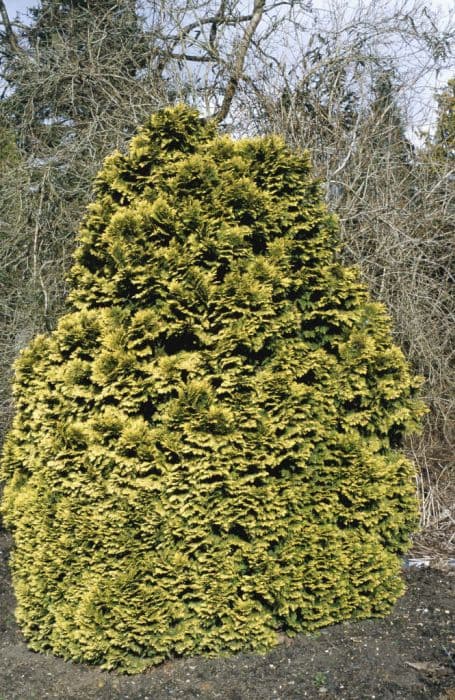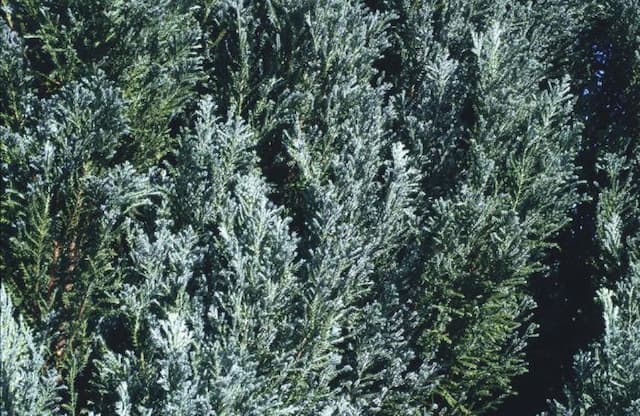Lawson Cypress Chamaecyparis lawsoniana 'Fletcheri'
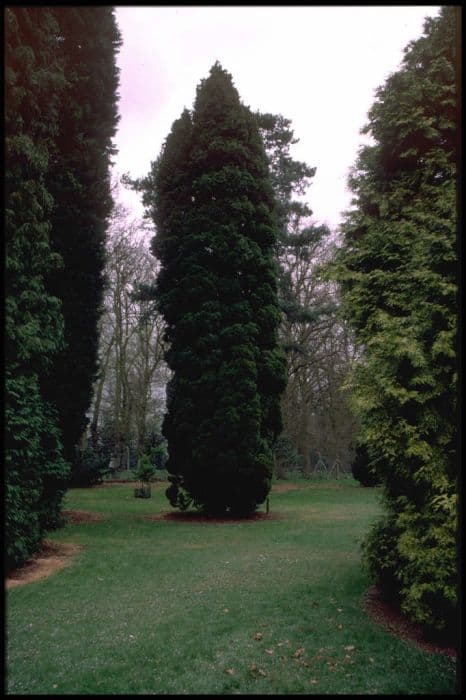
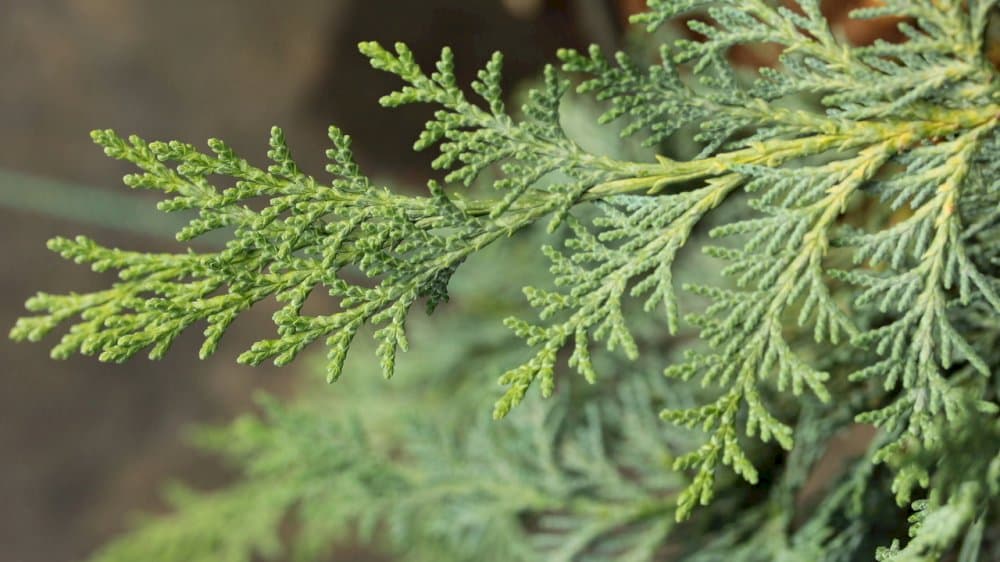
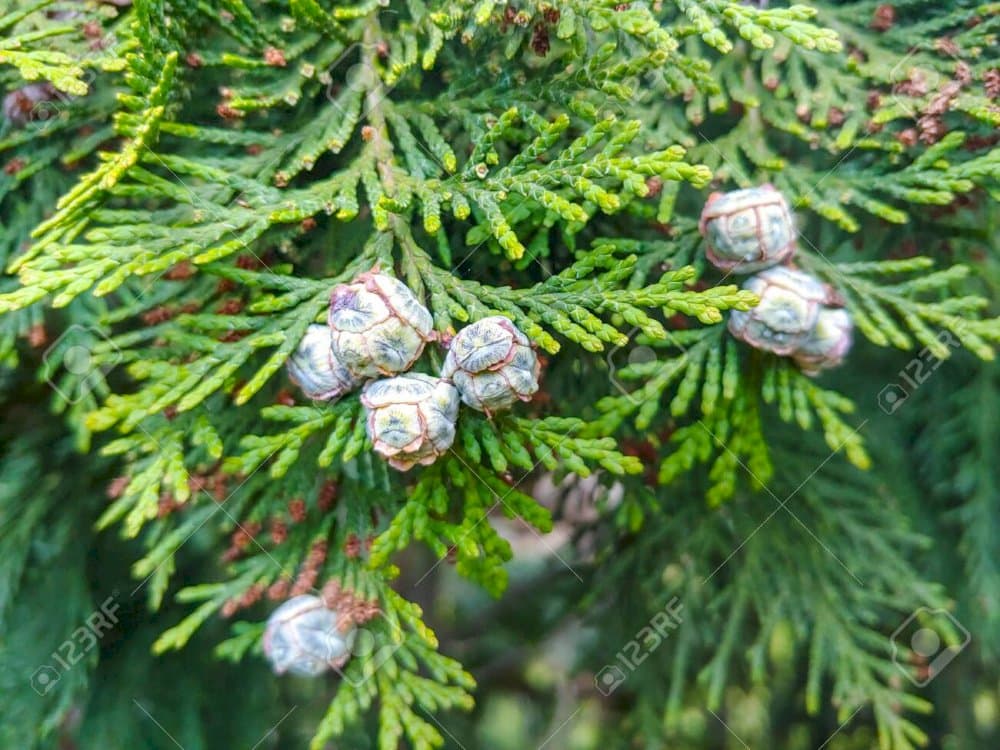
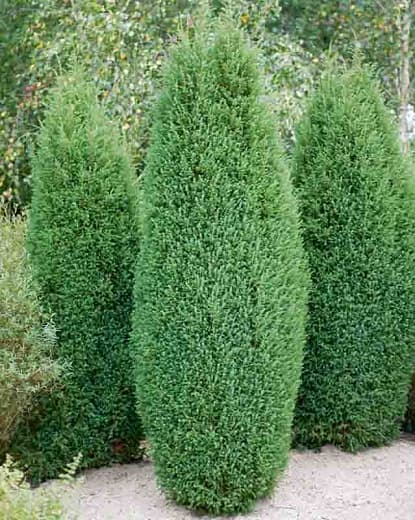
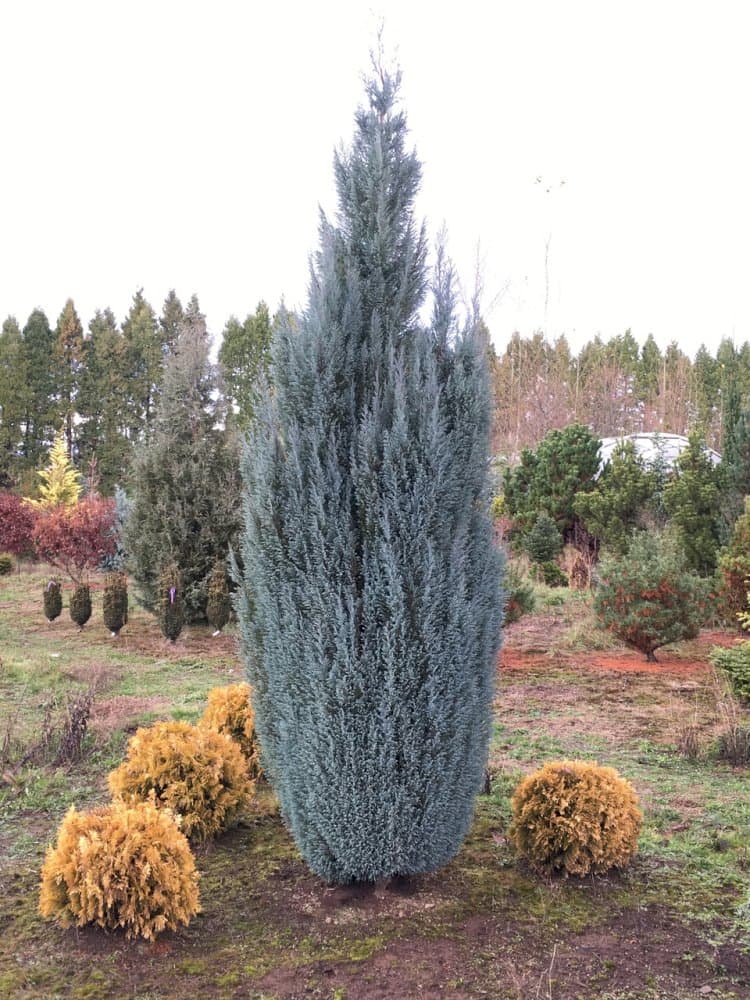
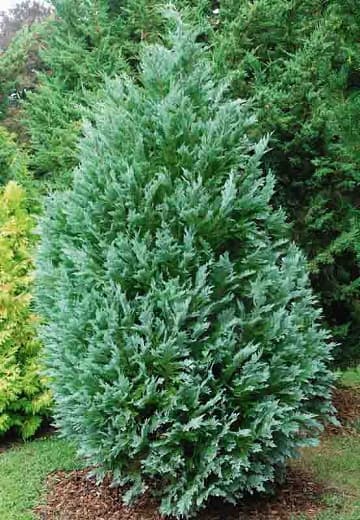

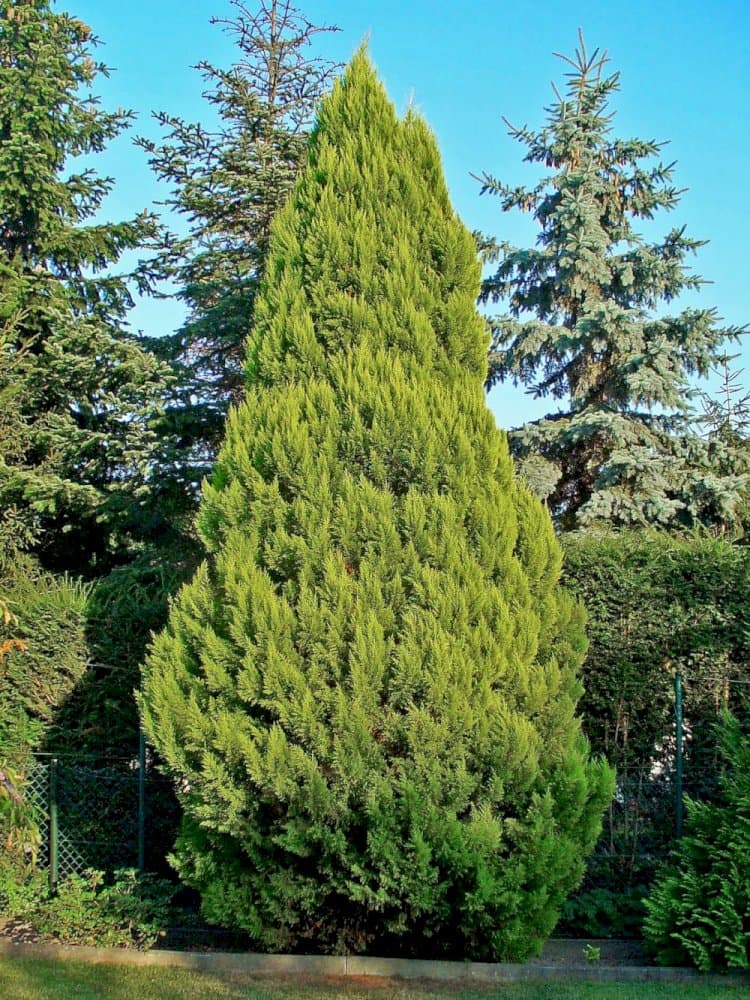
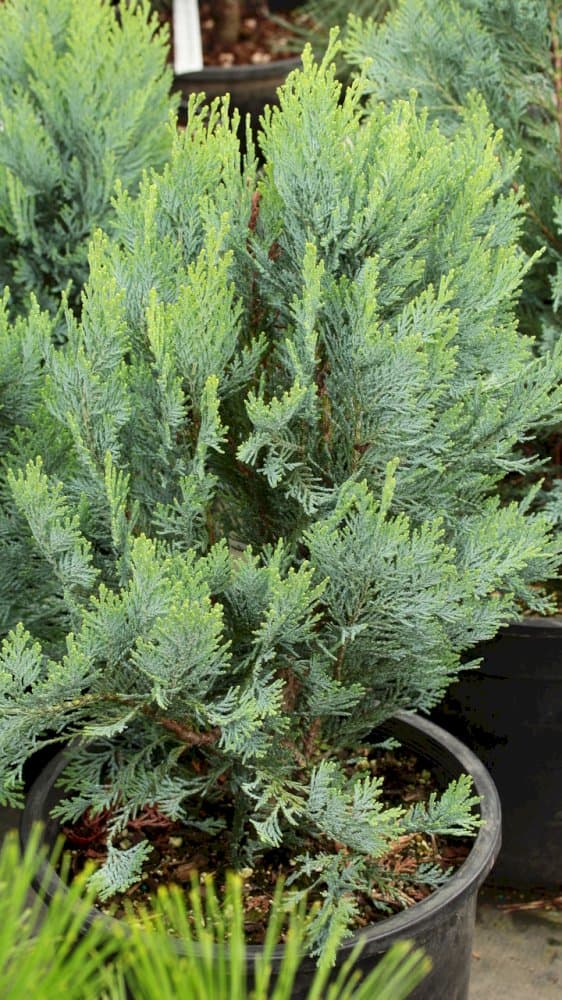
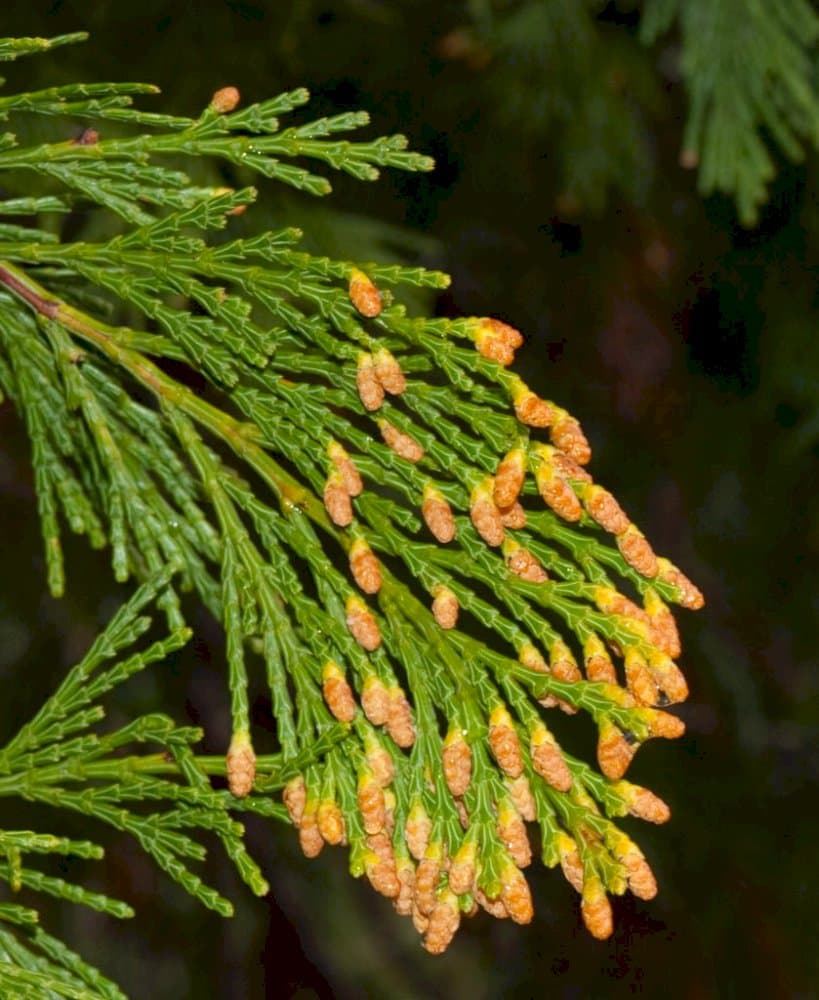
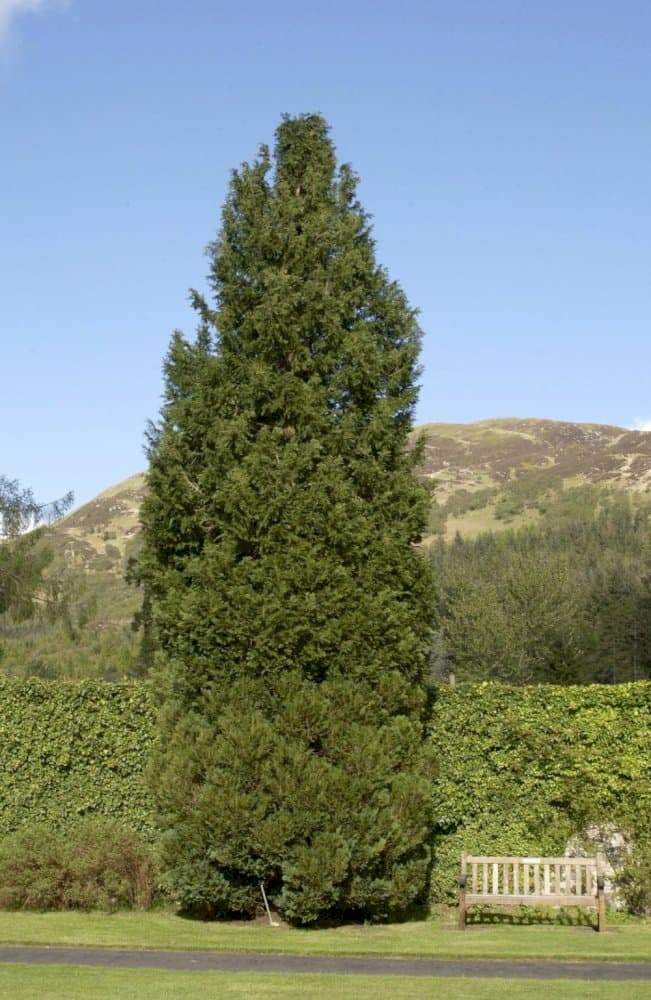
ABOUT
The plant commonly known as Lawson's Cypress 'Fletcheri' is a visually stunning evergreen with a lush, dense foliage that forms a uniquely textured appearance. Its leaves are arranged in flattened sprays with a soft, feathery feel, showcasing a rich green color that adds to the plant's beauty. The foliage may sometimes exhibit hints of blue or silver, which provide an attractive contrast against the green backdrop. Cones may be present on the mature plant, typically small and not prominently displayed, adding subtle interest to the overall look. The bark of Lawson's Cypress 'Fletcheri' has a fibrous texture and can be reddish-brown in color, peeling off in narrow strips. The overall shape of the plant is pyramidal, giving it a classic conical silhouette that fits well in both formal and informal landscape settings. Its elegant and stately presence makes it a popular choice for gardens, where it serves as a specimen or accent plant, integrating well with a variety of garden styles and themes.
About this plant
 Names
NamesFamily
Cupressaceae
Synonyms
Fletcher's Lawson Cypress, Fletcheri Cypress
Common names
Cupressus lawsoniana 'Fletcheri', Chamaecyparis lawsoniana var. fletcheri, Cupressus fletcheri.
 Toxicity
ToxicityTo humans
The common name of Chamaecyparis lawsoniana 'Fletcheri' is Lawson's cypress. It is generally not considered toxic to humans. There is minimal risk of poisoning from ingesting the parts of this plant, and it does not typically cause adverse reactions upon contact or consumption. However, like with many plants, individual allergies or sensitivities could potentially occur, and it is not advisable to consume any plant material that is not commonly recognized as edible.
To pets
Lawson's cypress is not commonly known to be toxic to pets. It does not have a history of causing serious poisoning in animals. However, ingestion of plant material could potentially lead to gastrointestinal upset, such as vomiting or diarrhea, mainly due to the physical irritation from the plant fibers rather than chemical toxicity. It is always best to prevent pets from consuming non-food plants as a precaution.
 Characteristics
CharacteristicsLife cycle
Perennials
Foliage type
Evergreen
Color of leaves
Varies
Height
6-8 feet (1.8-2.4 meters)
Spread
3-4 feet (0.9-1.2 meters)
Plant type
Tree
Hardiness zones
5
Native area
North America
Benefits
 General Benefits
General Benefits- Ornamental Value: Lawson Cypress 'Fletcheri' is often used in landscaping for its distinctive foliage and pyramidal shape, adding an elegant aesthetic to gardens and parks.
- Privacy Screening: With its dense growth habit, it serves well as a natural privacy screen, blocking out unwanted views and noises.
- Habitat for Wildlife: Provides shelter and nesting sites for birds, as well as being a potential source of food for various wildlife.
- Durability: It is known for being hardy and can tolerate a range of soil types, temperatures, and conditions, making it a reliable choice for gardeners.
- Low Maintenance: Once established, Lawson Cypress requires minimal care, which might be ideal for those looking for low-effort landscaping options.
- Evergreen Interest: As an evergreen, it provides year-round color and structural interest in the landscape.
- Soil Erosion Control: Its root system helps to stabilize the soil, reducing erosion on slopes and in areas prone to soil loss.
- Windbreak: Its thick foliage can act as a windbreak, protecting other plants and structures from damaging winds.
- Variety in Landscaping: 'Fletcheri' offers a slightly different twist on the common Lawson Cypress, with perhaps unique foliage color or growth habit.
 Medical Properties
Medical PropertiesThis plant is not used for medical purposes.
 Air-purifying Qualities
Air-purifying QualitiesThis plant is not specifically known for air purifying qualities.
 Other Uses
Other Uses- Woodworking Projects: The wood from this conifer, known as Port Orford cedar, is highly valued for its strength and resistance to decay, making it an excellent material for building outdoor furniture and garden structures.
- Aromatic Sachets: The foliage of the Port Orford cedar has a pleasant, spicy scent that can be used to fill sachets for placing in drawers and closets as a natural deodorizer.
- Model Making: The lightweight yet strong wood of Port Orford cedar is often used in the crafting of model ships and airplanes.
- Soundboards for Musical Instruments: The wood is appreciated for its acoustic properties and is sometimes used in the production of soundboards for pianos and guitars.
- Crafts and Decorations: The scaly leaves and cones can be used in floral arrangements or as components in wreaths and other decorations, especially around the holidays.
- Beekeeping: Beekeepers sometimes use the wood from Port Orford cedar to construct beehives because of its resistance to rot and insects.
- Horticultural Art: Trained into topiary forms, the Port Orford cedar can be shaped into elaborate designs in the landscape.
- Bonsai Culture: The small foliage and adaptable nature of the Port Orford cedar make it ideal for use in bonsai, the Japanese art of growing miniature trees.
- Windbreaks: When planted in groups, these trees can serve as windbreaks due to their dense foliage, thereby protecting smaller, less hardy plants.
- Erosion Control: The extensive root system of the Port Orford cedar makes it a good candidate for erosion control on slopes and hillsides.
Interesting Facts
 Feng Shui
Feng ShuiThe Lawson's Cypress is not used in Feng Shui practice.
 Zodiac Sign Compitability
Zodiac Sign CompitabilityThe Lawson's Cypress is not used in astrology practice.
 Plant Symbolism
Plant Symbolism- Longevity: Chamaecyparis lawsoniana 'Fletcheri', commonly known as the Port Orford cedar, often symbolizes longevity due to its potential to live for centuries.
- Strength: The wood of the Port Orford cedar is highly valued for its strength and durability, making the tree a symbol of strength and stability.
- Purity: The aromatic and clean scent of the cedar's wood and leaves is associated with purity and cleanliness in various cultures.
- Protection: Cedar trees are often thought to possess protective qualities, and their presence is believed to safeguard against negative influences.
- Peace: The Port Orford cedar is also a symbol of peace, with its evergreen nature representing tranquility and eternal serenity.
 Water
WaterFor the Lawson's Cypress 'Fletcheri', it is essential to maintain consistent moisture in the soil, especially during the first growing season to establish a deep, extensive root system. Water the plant regularly, more frequently in extreme heat or containers. Typically, this means providing about 1-2 inches of water per week, but this can vary depending on climate and soil conditions. Avoid overwatering, as standing water can lead to root rot. During the winter months, reduce the watering but do not let the soil completely dry out.
 Light
LightThe Lawson's Cypress 'Fletcheri' thrives best in full sun to partial shade conditions. The ideal spot for this conifer is an area where it can receive at least six hours of direct sunlight daily, but it is also tolerant of light shade. Avoid deeply shaded locations as this can lead to poor growth and reduced foliage density.
 Temperature
TemperatureLawson's Cypress 'Fletcheri' prefers a temperature range between 60°F and 70°F but can tolerate temperatures as low as -20°F once established, making it a hardy choice for cooler climates. Extreme heat above 90°F can be stressful for the plant, especially if there isn't adequate water. Providing mulch can help moderate soil temperature.
 Pruning
PruningPruning the Lawson's Cypress 'Fletcheri' is generally done to maintain its desired shape and remove any dead or diseased branches. Prune in late winter or early spring before the onset of new growth. Light pruning is best, as this plant does not respond well to severe cutting back. Remove only the necessary branches to keep the plant healthy and well-groomed.
 Cleaning
CleaningAs needed
 Soil
SoilThe best soil mix for Lawson's Cypress 'Fletcheri' should be well-drained, with a mix of loam, peat, and sharp sand, promoting good root health. The ideal soil pH for this conifer is slightly acidic, around pH 5.5 to 6.5, to mimic its native woodland conditions.
 Repotting
RepottingLawson's Cypress 'Fletcheri' should be repotted every 2-3 years to ensure fresh soil and room for growth. Slow growth may extend this period, but root-bound plants should be repotted regardless.
 Humidity & Misting
Humidity & MistingLawson's Cypress 'Fletcheri' prefer moderate to high humidity levels but are adaptable to lower humidity typical of outdoor environments.
 Suitable locations
Suitable locationsIndoor
Place in a cool room with high light and monitor humidity.
Outdoor
Provide sun to partial shade and shelter from harsh winds.
Hardiness zone
5-9 USDA
 Life cycle
Life cycleLawson's Cypress 'Fletcheri' begins its life as a seed, typically germinating in a moist, well-drained soil environment. Once the seed sprouts, it enters the seedling stage, establishing roots and beginning to grow its characteristic, scale-like foliage. As it matures into a young tree, it will develop a conical form, and over several years it will reach its juvenile stage with a more defined shape and structure. The plant continues to grow, entering its adult phase, where it can reach 6-15 feet tall, and it begins to reproduce by producing cones. Once mature, Lawson's Cypress 'Fletcheri' will produce both male and female cones on the same tree; the male cones release pollen, which fertilizes the female cones, leading to the development of seeds. Over many years, the tree may eventually decline due to age, environmental stresses, or disease, at which point it completes its life cycle.
 Propogation
PropogationPropogation time
Spring to early summer
The most popular method of propagating the Lawson's Cypress 'Fletcheri' is through semi-hardwood cuttings. This process is typically done in late summer to early fall. Cut a 4 to 6-inch (10 to 15 cm) length of semi-hardwood, which is a portion of the branch that is not brand new but not fully matured and hardened. Remove the foliage from the lower half of the cutting, dip the cut end in rooting hormone, and then insert it into a well-draining potting mix. The cutting should be kept moist and in a warm, humid environment until roots have established, which typically takes several weeks. Covering the pot with a plastic bag can help maintain the necessary humidity. Once rooted, the young plant can gradually acclimate to less humid conditions before transplanting to a more permanent location.

